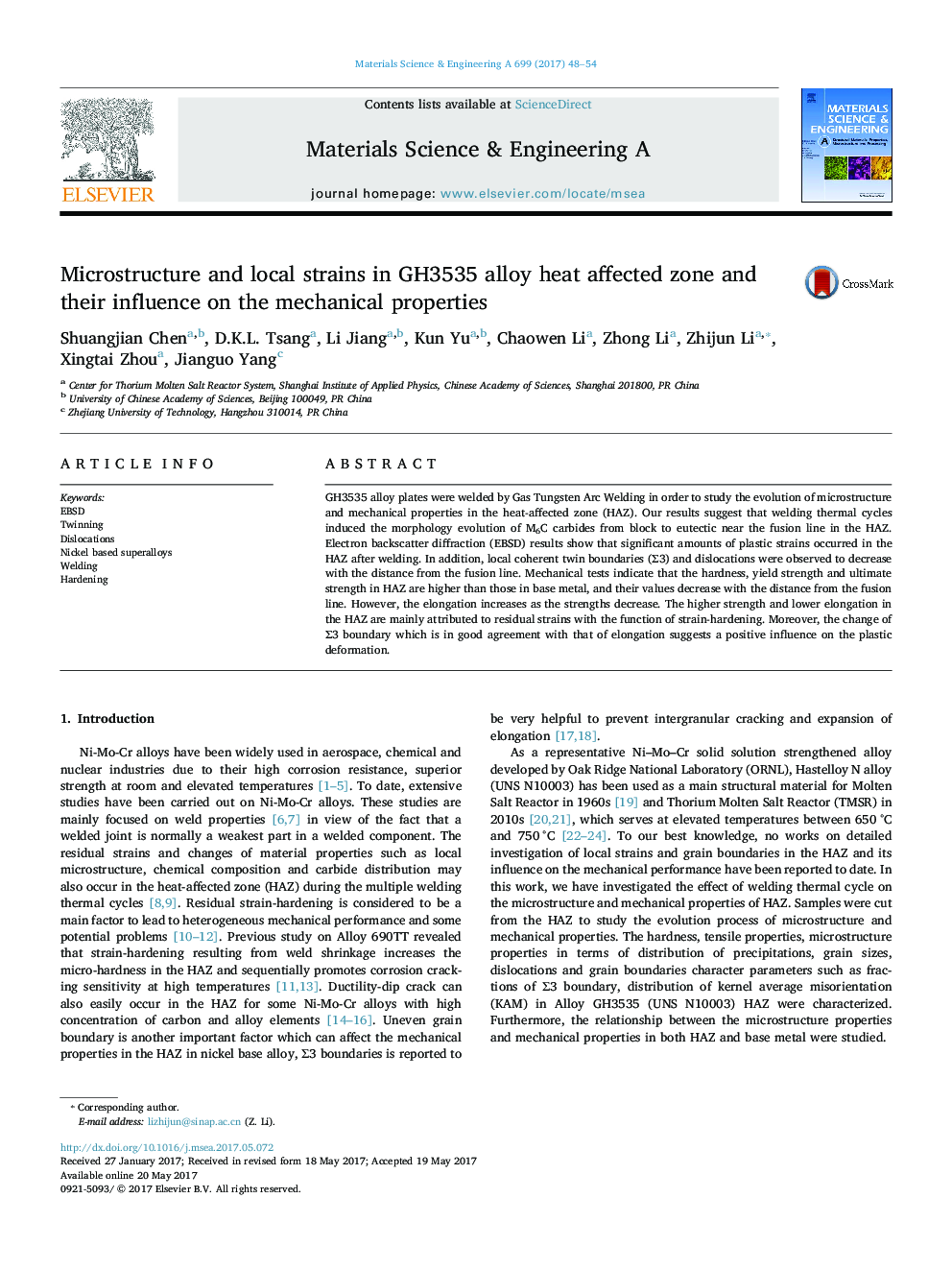| Article ID | Journal | Published Year | Pages | File Type |
|---|---|---|---|---|
| 5455619 | Materials Science and Engineering: A | 2017 | 7 Pages |
Abstract
GH3535 alloy plates were welded by Gas Tungsten Arc Welding in order to study the evolution of microstructure and mechanical properties in the heat-affected zone (HAZ). Our results suggest that welding thermal cycles induced the morphology evolution of M6C carbides from block to eutectic near the fusion line in the HAZ. Electron backscatter diffraction (EBSD) results show that significant amounts of plastic strains occurred in the HAZ after welding. In addition, local coherent twin boundaries (Σ3) and dislocations were observed to decrease with the distance from the fusion line. Mechanical tests indicate that the hardness, yield strength and ultimate strength in HAZ are higher than those in base metal, and their values decrease with the distance from the fusion line. However, the elongation increases as the strengths decrease. The higher strength and lower elongation in the HAZ are mainly attributed to residual strains with the function of strain-hardening. Moreover, the change of Σ3 boundary which is in good agreement with that of elongation suggests a positive influence on the plastic deformation.
Related Topics
Physical Sciences and Engineering
Materials Science
Materials Science (General)
Authors
Shuangjian Chen, D.K.L. Tsang, Li Jiang, Kun Yu, Chaowen Li, Zhong Li, Zhijun Li, Xingtai Zhou, Jianguo Yang,
